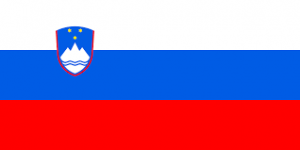Language/Slovenian/Grammar/Gender
Hi Slovenian learners! 😊
In this lesson, we will dive into Slovenian grammar's gender aspect. Slovenian is a Slavic language, which means it is similar to other Slavic languages like Russian, Czech, and Polish in terms of grammar, so if you already know one of these languages, it could be helpful when learning Slovenian grammar.
With the completion of this lesson, consider investigating these related pages: Conditional and future tense & Future perfect tense.
Gender in Slovenian[edit | edit source]
Similar to many other languages, Slovenian nouns have grammatical gender. There are three genders in Slovenian: masculine, feminine, and neutral. Each gender has its endings, which must be learned by heart. Unlike many European languages, Slovenian does not have a gender-neuter article 'the' and would usually not use a gender term for it.
Here is a table that shows the different endings:
| Slovenian | Pronunciation | English |
|---|---|---|
| sonček | sonchek | sunshine (masculine) |
| roža | rozhah | flower (feminine) |
| mesto | mesto | city (neutral) |
| kuža | koo-zah | puppy (masculine) |
| žirafa | zhee-rah-fah | giraffe (feminine) |
Notice how the endings change depending on the gender. It is important to learn these endings so that you can use the proper article and ending for adjectives.
Articles[edit | edit source]
Slovenian language has definite and indefinite articles. The indefinite article for masculine is "en," and for feminine is "ena" and for neutral is "eno." Here are some examples:
- Moja sestra ima enega psa. (My sister has a dog.)
- Moja mama ima eno mačko. (My mother has a cat.)
- Moje mesto je bilo uničeno v potresu. (My city was destroyed by an earthquake.)
The definite article is formed as a suffix at the end of the noun's root. For masculine nouns, it is '-e', for feminine '-a', and for neutral '-o.' Here are some examples:
- Fant ima rdečega avta. (The boy has a red car.)
- Dekle ima rjavo torbico. (The girl has a brown bag.)
- Mesto je bilo opustošeno zaradi vojne. (The city was devastated because of the war.)
Adjectives[edit | edit source]
The gender of the adjective must match the noun to which it applies. When the noun is masculine, the adjective needs to have a masculine ending, for feminine nouns - a feminine ending, and for neutral nouns - a neutral ending. Likewise, the case of the adjective should match the case of the noun it describes.
Let's see how the endings could be used:
| Slovenian | Pronunciation | English |
|---|---|---|
| knjiga je debela | kn-yee-gah yeh deh-beh-lah | The book is thick |
| roža je lepa | ro-zhah yeh leh-pah | The flower is beautiful |
| mesto je veliko | meh-stoh yeh veh-lee-koh | The city is big |
Dialogue[edit | edit source]
To understand the usage of gender in context, let's have a dialogue:
- Person 1: Kateri avto imaš? (Which car do you have?)
- Person 2: Imam rdečega audija. (I have a red Audi.)
Interesting Fact[edit | edit source]
Slovenian is one of the few languages that uses the dual number. It is a grammatical number that occurs when exactly two things or persons are referred to. It has its endings, which are slightly different from the singular and plural. For instance, for masculine nouns, the ending is '-a,' for feminine '-e,' and for neutral '-i.'
Practice[edit | edit source]
The best way to practice grammatical gender is to read and listen to Slovenian as much as possible. Watch Slovenian TV shows or movies, listen to Slovenian music, and talk to native speakers. To improve your Slovenian Grammar, you can also use the Polyglot Club website. Find native speakers and ask them any questions!
Sources[edit | edit source]
Other Lessons[edit | edit source]
- Questions
- Conditional Mood
- Future Tense
- Adjectives
- Nouns
- Give your Opinion
- Conjugation
- Negation
- How to Use Be

